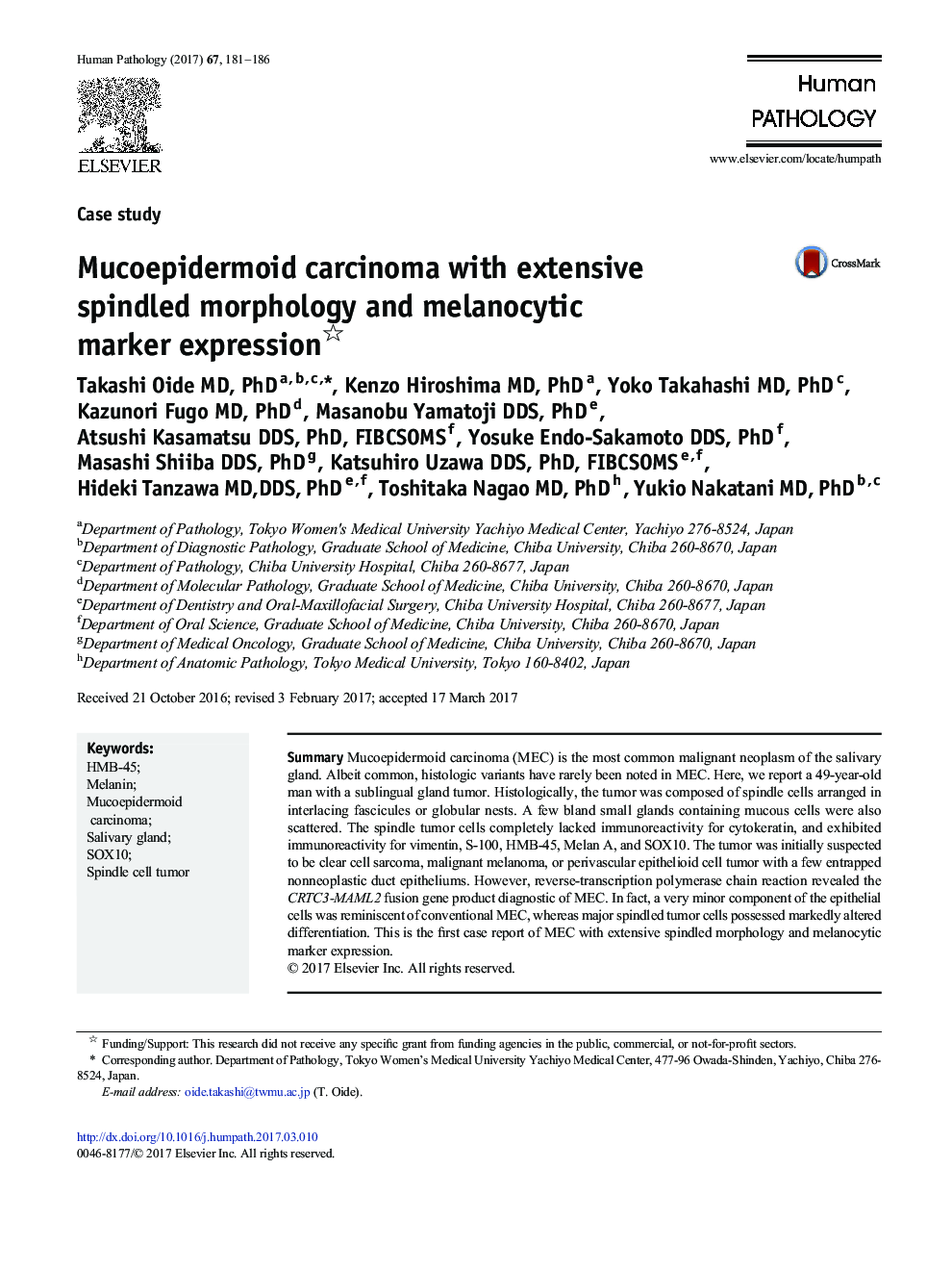| Article ID | Journal | Published Year | Pages | File Type |
|---|---|---|---|---|
| 5716254 | Human Pathology | 2017 | 6 Pages |
â¢The first case of mucoepidermoid carcinoma (MEC) with marked spindled morphologyâ¢The first case of MEC expressing melanocytic markers and yielding melanin granulesâ¢Molecularly confirmed diagnosis of MEC by CRTC3-MAML2 fusion gene product detectionâ¢A novel variant of MEC, which broadens the histologic spectrum of MEC
SummaryMucoepidermoid carcinoma (MEC) is the most common malignant neoplasm of the salivary gland. Albeit common, histologic variants have rarely been noted in MEC. Here, we report a 49-year-old man with a sublingual gland tumor. Histologically, the tumor was composed of spindle cells arranged in interlacing fascicules or globular nests. A few bland small glands containing mucous cells were also scattered. The spindle tumor cells completely lacked immunoreactivity for cytokeratin, and exhibited immunoreactivity for vimentin, S-100, HMB-45, Melan A, and SOX10. The tumor was initially suspected to be clear cell sarcoma, malignant melanoma, or perivascular epithelioid cell tumor with a few entrapped nonneoplastic duct epitheliums. However, reverse-transcription polymerase chain reaction revealed the CRTC3-MAML2 fusion gene product diagnostic of MEC. In fact, a very minor component of the epithelial cells was reminiscent of conventional MEC, whereas major spindled tumor cells possessed markedly altered differentiation. This is the first case report of MEC with extensive spindled morphology and melanocytic marker expression.
